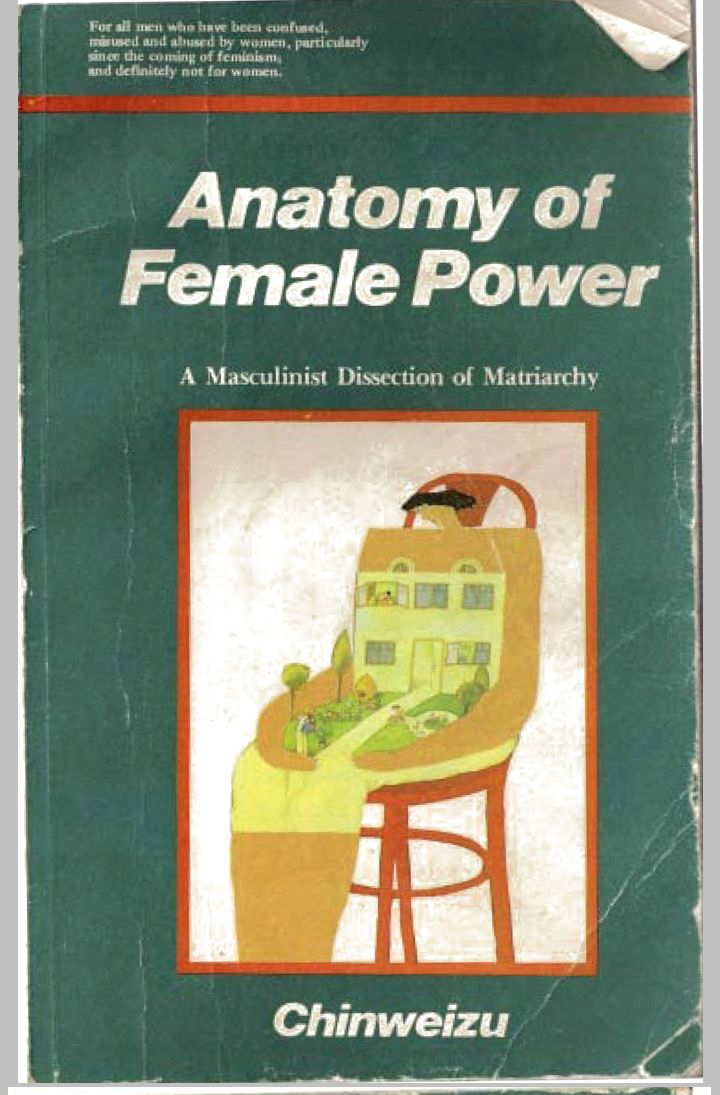My Review of Chinweizu Ibekwe's Anatomy of Female Power, published in 1990.
I read Chinweizu Ibekwe's Anatomy of Female Power between August 25th and August 26th, 2020. Matriarch exists. Does matriarchy exist powerfully as patriarchy does? This is the question which this book proffers answers to. It is a brief essay which, with persuasive series of evidence, challenges the catholicity of the impression that matriarchy is a mirage. It evidently submits that female power exits and "the power they wield is neither illusory nor a joke." Theirs is an amorphous mass of power which calls the shots for men all through their lives.
To contest the men's supremacist attitude towards women, it handily details how women's influence cut through men's existence like a thread. The three phases of men's life are ruled by women's power: motherpower, bridepower and wifepower.
The motherpower manifest in the cradle and espouses the universal truth that "the hand that rocks the cradle is the hand that rules the world." The bridepower by fulfilling his sexual ravenousness forces him to make injudicious decisions. It is in the wifepower she becomes his matriarch, a closet despot. The three powers also manifest as cradle power, kitchen power and womb power. What is demonstrated by this interplay of powers is that men are wallowing in sophisticated ignorance when it comes to the question of power in human society.
Chinweizu, as he is fondly called, argues that the human society is being ruled by Gynocracy - the government by women. Here the women possess both persuasive and to get everything they ever desire. In this government, men's ultimate endeavour is to satisfy women. Their work is only done with women in view. They live to fulfill women's desires. Extant laws, particularly divorce laws and societal expectations are tilted against men. Men are obsessed with women beauty, hence raunchy advertisements are used to fleece them of their hard-earned money. It might be true, however, that "if women didn't exist all the money in the world would have no meaning."
Ultimately, he describes marriage as a microcosm of gynocracy: a nest where women are the nest owner and men as nest slave working all their lives to satisfy the needs of the nest owner.
He further dislodges the sole claim of feminism that women are slave to me. He submits that feminists always resort to using the public structures such as politics, economics and religions which are the domains of male power to decry the subjugation of women by men. However, they do not state their own lofty ambitions to attain the power in these positions, and even their own absolute power in other domains. These other domains are the superstructures which control the public structures being ruled by men.
Outlining the domains of women power over men is not the sole focus of the book. Chinweizu puts forward suggestions on how men can save themselves from continual servitude under women power. He submits that men must strive to wrestle cradle power, kitchen power and womb power from women. Doing this will put men in charge of their own lives and save them from constant enslavement by women. To all intents and purposes, Chinweizu has produced an essential reading for anyone seeking to understand the competing interests among patriarchy, matriarchy and feminism. This he rightly does by offering unorthodox insights into the hidden secrets and agenda of matriarchy and how to steer through stormy seas of feminism.



Comments
Post a Comment